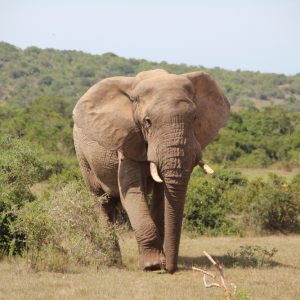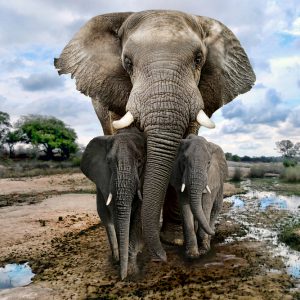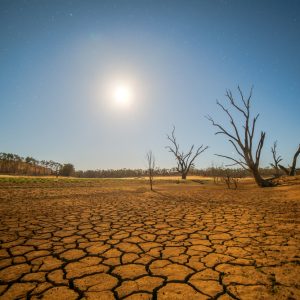The Drought In Zimbabwe

Mana Pools National Park in Zimbabwe is home to several rare wildlife species, like elephants, cape buffalo, hippo, zebra, impala, lions, and much more. What was once thought to be a perennial water supply has dried up to the point where there is practically no water in the park, leaving animals in the area dying of thirst – literally. Elephants weak from dehydration are collapsing and dying, with no food or water to survive.
To witness the death of such majestic animals is heartbreaking. Carcasses lay scattered along with the dried up water source. The carcasses of buffalo and elephants separated by yards. The situation is so dire that the lions resorted to attacking the carcass of a buffalo that was dragged out of the mud – something rarely witnessed in the wild, since we know how lions prefer to feast on their fresh kill as opposed to dead meat.
The Shocking Truth
The animals at the Mana Pools National Park are distressed with this water and food shortage. It is ironic to see a park that got its name after the four pools in it, which are filled by the floods of the Zambezi river in the rainy season, should now be experiencing such deadly drought.
The numbers are staggering. In just two months Zimbabwe has long around 105 elephants, most of which were from the Mana Park while the rest were from Hwange National Park. It has reached a point was animals are so desperate for survival that they are now straying from their wild reserves and into the nearby communities in a desperate search for water and food. Unfortunately, when large animals stray into the communities they destroy the crops and even kill people causing panic and havoc. In 2019 alone, over 20 people were killed by stray wildlife.
Why Is The Drought So Bad This Year?

This part of the year is generally dry in this region, however, the dry spell from minimal rain this year, is the cause for distress. The Zambezi river flow has drastically reduced. There have been no floods to fill up the pools in the parks. The drought is the worst that Zimbabwe has seen in the last four decades.
In fact, of the last five rainy seasons, only one year brought in normal rainfall in the Southern African. It also doesn’t help that Zimbabwe is overpopulated with elephants at the moment. The Hwange park can cater to 15,000 elephants but the count is exceeding 53,000. This makes it very difficult to stretch the limited resources, even though wildlife agencies have drilled many wells as deep as 400m to source water for the animals. The overcrowding presents other problems like loss of habitat as well.
A Need For Intervention
A fear that more lives will be lost before the rains have forced the authorities to intervene. As they fear that too many animals will die before the rains do come, though they are expected to arrive soon. Munyaradzi Dzoro, a park agency wildlife official, stated that he starts every day of his with a prayer for the rains as he has been seeing the forest go to ruins and is surrounded by the carcass of buffalo and elephants that died of starvation and dehydration. He also shared that the last substantial rains were as far back as April.
Unfortunately for the animal sin the parks of Zimbabwe, they are confined to barren, dry flood plains where the temperatures are soaring to up to 45 degrees centigrade. Desperate animals that try to reach the last remains of water in the park area often get stuck in the mud and die or suffer further while trying to escape out of the pit. There is little that can be done to help prevent animals from falling for these ‘death traps’.
The Bottom Line

The catastrophic conditions in Zimbabwe are only one example of many that are occurring around the globe as the consequences of climate change. If nothing is done to help slow down the rate at which the world is experiencing the pangs of climate change, we will soon find ourselves in a similar situation too. It is indeed alarming, but it is also the last opportunity we have to at and do something to save our planet!





